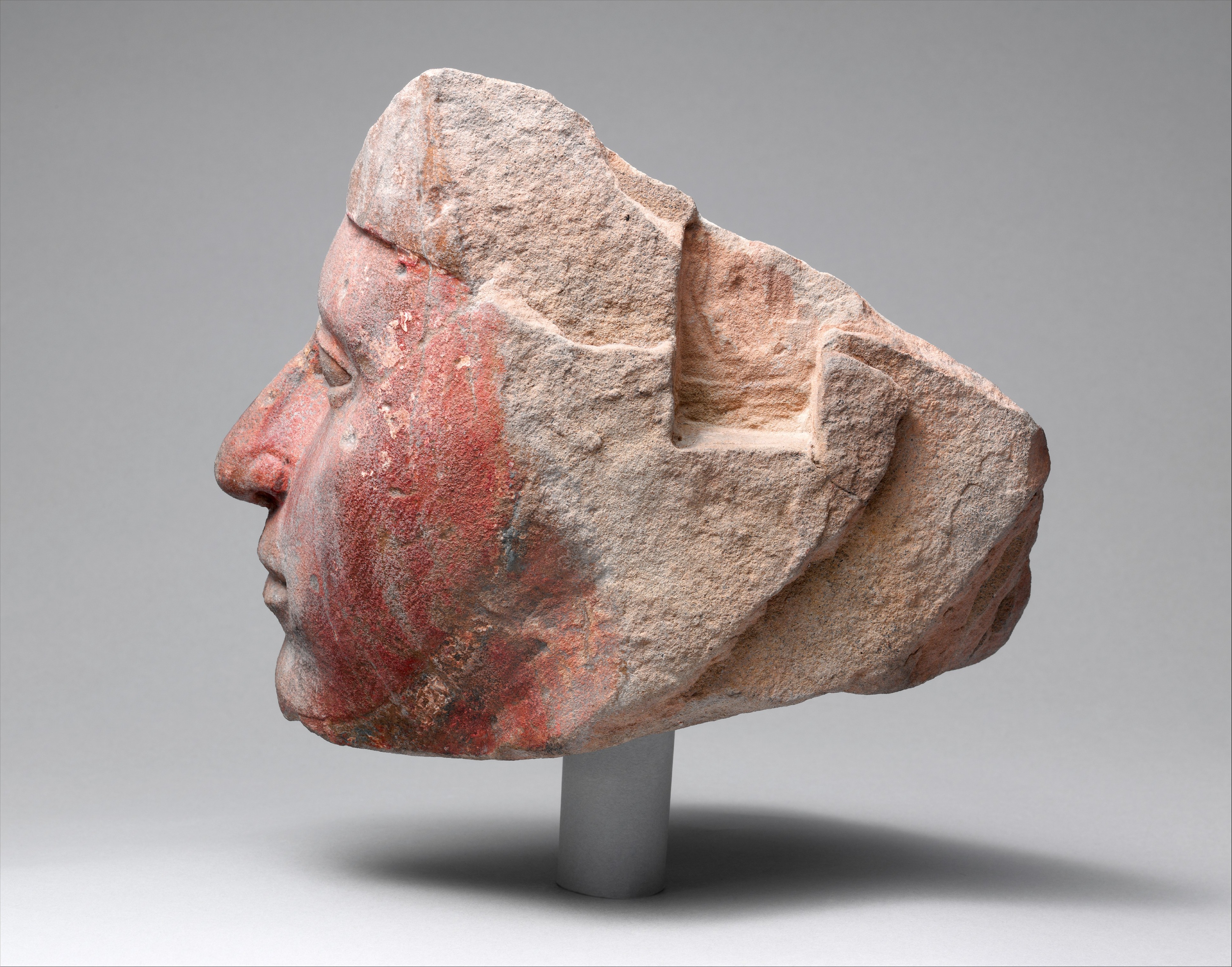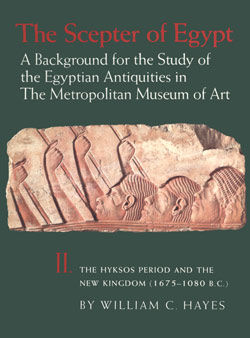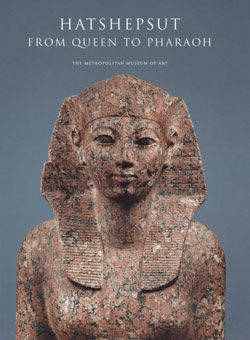Head from a Statue of King Amenhotep I
New Kingdom
King Amenhotep I, second ruler of Dynasty 18, made his own contributions toward the temple at Deir el-Bahri built by Mentuhotep II at the beginning of the Middle Kingdom. Most notably, he endowed the processional way, along which the god Amun's image was carried once a year toward Mentuhotep's sanctuary, with a row of mummiform (Osiride) statues of himself. These statues are remarkable not only for their imposing original height of more than 2.5 meters (9 feet) but also for the individuality of their faces. This fragment of a face with a fleshy nose and split chin comes from an example of the series that is especially artistically refined: a true portrait of an individual person who was king of Egypt. Like some others in the group, the head shows signs that it was damaged in antiquity and later repaired with the help of a dovetail dowel.
The profile of this head is strikingly similar to that shown on a relief depicting the same king (45.2.7). In particular, compare the outline of the nose and the short upper lip which are almost identical in both works (see attached photograph). The similarities in these pieces, one in two-dimensions and the other in three, demonstrate that images of an Egyptian king were probably based on an officially sanctioned likeness that combined recognizable features into an idealized portrait of the monarch in question.
Due to rights restrictions, this image cannot be enlarged, viewed at full screen, or downloaded.
This artwork is meant to be viewed from right to left. Scroll left to view more.





